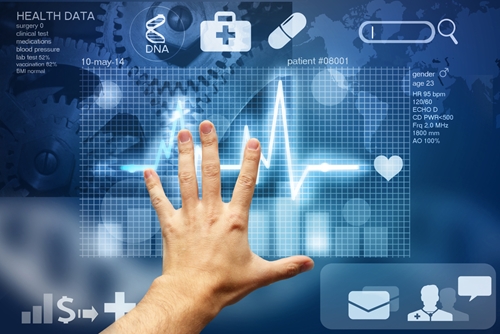Students are increasingly being taught to use an EHR
EHR software programs are becoming increasingly prevalent in medical facilities. These systems offer stricter security measures, improved communications and more efficiency for providers. They can also reduce errors as patient data gets integrated into one easily accessible location for anytime, anywhere access and real-time updates.
In a report on their increasing adoption, Kalorama Information noted that EHR’s are poised to grow at a rate of seven percent over the next four years. In addition to the benefits listed above, physicians have a financial incentive to make the switch. Those that do not switch to electronic medical records this year will face a two percent reduction in Medicare reimbursements, and a three percent cutback in 2017 and beyond. The combination of these penalties, as well as the advantages noted in the systems, suggests that the orthopedic EHR market will continue to grow.
EHR in medical schools
Since orthopedic EHR will be an important part of the future of healthcare, it stands to reasons that the next generation of physicians should be trained on their usage. New doctors that have not been taught how to manage them will be behind the curve, and unable to perform the duties of their jobs as well as their peers. To prevent this scenario, many medical schools are teaching students how to use electronic records as part of the rest of their coursework, in the aim of helping them be better prepared.
These measures are in line with recommended guidelines from medical associations, many of which have pushed for more EHR education. In June 2015, for example, the American Medical Association stated its new policy regarding EHR education for future medical providers.
“There is a clear need for medical students today to have access to and learn how to properly use electronic health records well before they enter practice,” said Dr. Jesse M. Ehrenfeld, AMA board member.
Together with the medical schools themselves, the AMA has been working to create curricula for students, even as low as the undergraduate level. The earlier students learn about the use of modern software, the more facility they will have with it when it comes time to begin their professional lives. The Association of American Medical Colleges has pursued similar programs for teaching students, providing simulations that let students get hands-on experience with the coding required to use EHR.
Teaching students to teach patients
Doctors don’t just need to be able to use EHR for their own internal purposes – they often have to explain how they work to the people that they will be treating. The software allows patients to have greater access to their own medical information, but many of them do not understand how to do so. As a result, they are not getting the full value out of the technology. Per Patient Engagement HIT, nearly half of the patients that have access to their own records fail to ever actually access them. The reasons that they don’t fully use EHR include lack of understanding of the information provided, and simply not knowing how to log on.
In these cases, physicians can provide valuable information to the patients about what the portals are and how they can be used. Doing so takes a full administrative effort, starting with the receptionist who checks the person in. Each professional that a patient talks to should remind them that they have access to their own records, and be able to answer any questions that arise. If the need arises, a nurse or doctor should be equipped to help a patient log on and to explain the information presented. This not only helps people better learn how to take charge of their own care, it also shows that the healthcare providers are invested in the sustained well-being of the people they treat.
Being able to provide this type of guidance means that each person in the organization needs to be aware of how an EHR works. It is impossible for a doctor to explain something to a patient if he doesn’t understand it himself. It falls on hospitalists and administrators to continually stress how vital these programs are, and provide ample opportunity for existing doctors to receive all of the certifications that they need. Creating a culture where everybody is expected to use these systems is an important first step to their widespread adoption.
EHR software offers benefits to the practice as a whole, as well. It can be integrated with medical billing and e-prescribing, saving time and energy. The fewer resources a healthcare provider has to spend on tedious administrative tasks, the more they can devote to the patient. Doctors are able to provide better care and the organization is able to receive more timely reimbursements – everybody wins.



